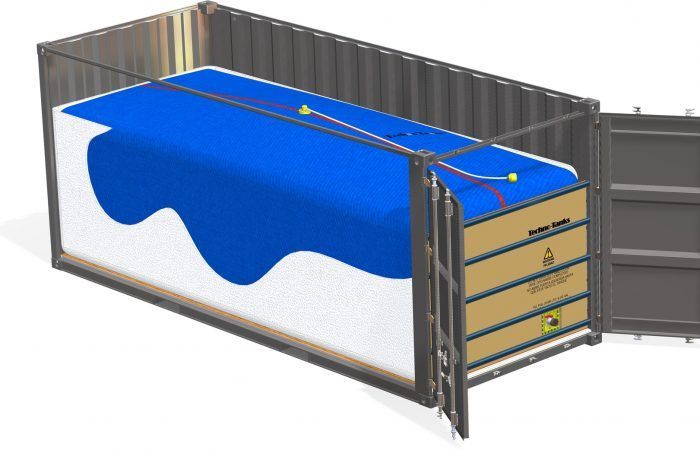
How To Use Reservoir Tank With Hydroponic Systems
Read Count : 207
Category : Blogs
Sub Category : Miscellaneous
Your hydroponics tank serves as the center of your system. Your water reservoir holds what your plants require to survive-nutrient-saturated solution. The reservoir is an important constituent in any hydroponics system. Therefore, a hydroponic reservoir stores the nutrient solution. Bear in mind that every hydroponic system uses a reservoir in differently. Hydroponic tanks have more or less a similar function and design. Naturally, they hold the nutrients and water for delivery to your plants. How they achieve this differs slightly based on the kind of hydroponic system. Here's a look at how tanks operate in various systems. Flexitanks in Hydroponics A flexitank reservoir has everything you require for storing water in a small box. It doesn't need any tools to set up and will decrease your storage and shipping costs instantly due to its inventive design. In a couple of minutes, your tank will be ready to blend the perfect nutrient batch. You'll discover it's the easiest and simplest way of setting up a reservoir tank. The flexitank is beneficial because you can use it like any other reservoir tank available in the market. Aside from that, you can pack it and store it at the end of every season. With its compact, flexible, and smart-storage design, you can use it and store it annually to enable space management. Benefits of Flexitanks • Flexitanks can fit in spaces where other types of water butts can't for instance, the attic. • You can move them easily from one growroom to another • They're discreet to install and ship Ebb and Flow Also called flood& drain system, the tank doesn't need to be positioned directly beneath or beside the growing tray. However, this is the most common and easiest setup. This system uses a water pump where the tubing runs to the plant tray from the hydroponics tank and floods the tray. The water attains a particular level and drains away gradually. Numerous systems comprise a drainage line that restores unused water to the tank. DWC In the Deep Water Culture hydroponic system, the plants suspend in a growing tray directly over the hydroponics tank. You'll find the roots hanging into the water reservoir, so the tank's placement should be beneath the grow tray. Tanks in such systems need an air stone to offer additional aeration. NFT Nutrient Film Technique systems function by transporting water to a plant tray from the nutrient reservoir in a continuous stream. In this case, you need a pump to transport water up to the tray although you can position the tank away from the plants provided tubing allows. Drip With this system, it's common to position the hydroponics tray beneath the growing tray. This aids in conserving any runoff water. The systems avail water to plants via tubing, which takes water to the growing tray from the reservoir. From there, all plants access water via holes in the tubing. These systems are easy to set up, use, and you can tailor them in numerous ways. They can be circulating or non-circulating systems. The former drip more frequently, with surplus nutrients flowing into the reservoir while the latter drip slowly to offer the plant sufficient nutrients consistently. Wick In this system, you must place the hydroponics tank directly beneath the growing tray. You'll find the tray comprises holes that permit an absorbent cord to link from the tank into the growing medium. Ways to Sustain Your Reservoir If you don't maintain your tank, the water could become a dangerous, poisonous substance to plants. Beware that drastic changes in the water's pH, quality, or nutrient concentration could place your plants into shock, invite bacteria and disease, or burn roots. These tips will help you maintain your tank. • Sustain appropriate temperature for nutrient solution It's essential to maintain the nutrient solution between 65 and 75 degrees. When temperatures get extremely high, the levels of dissolved oxygen decrease, creating an atmosphere for root rot. Extremely low temperatures on the other hand will slow down plant development. • Top off the Hydroponic Reservoir In circulating systems, it might be necessary to top off the reservoir. Water loss occurs because of plant processes and evaporation, so a replacement might be necessary to maintain the proper functioning of the system. You'll need to top off smaller reservoirs more often. • Change the Water The frequency with which you change the water depends on your preference and set up. Experts recommend bi-weekly or weekly nutrient changes. Nevertheless, you could go a week or two longer if you know your system. EC meters give an estimate of the amount of fertilizer present in the water. However, they don't give the amount of specific nutrients. Since plants don't absorb nutrients at a similar rate, topping off over a prolonged period could cause the accumulation of particular minerals. Remember, water change provides the chance to begin fresh with the appropriate chemical balance, decreases system build-up, and give the chance to clean the reservoir. Proper Aeration A well-oxygenated nutrient solution is significant for the healthy development of roots. It's essential for plant process and encourages the growth of the useful organism that reinforces the root system. Consider adding an additional air stone to sustain a high quantity of dissolved oxygen. Conduct regular EC and pH Checks Sustaining appropriate EC and pH levels are significant tasks when sustaining the hydroponic reservoir. You should keep pH ranges between 5.5 and 6.5. Ensure you conduct some research on the range of plants you’re growing to establish the appropriate EC levels for the hydroponic garden. While not thrilling, the hydroponic reservoir is a significant component of the hydroponic system because it accommodates the plants' food. Nevertheless, you must adopt proper care to enjoy the associated benefits.


